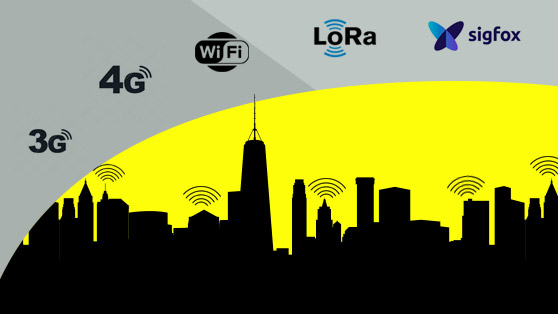Communication network of connected objects: how to choose the right one?
Reseau de communication
Using the right communication network to circulate information is fundamental.
For the communication of connected objects , there are three camps;
- Power-hungry equipment that has to send and receive large amounts of data. In this case we will talk about Wi-Fi or 3G, 4G, LTE.
- Mobile objects that need data at short distances and with intermediate throughput. We will potentially go to Bluetooth and BLE.
- And items that consume less energy, on standby most of the time, and which need to transmit a tiny amount of information per day. For the latter type of object, specific long-range low-speed networks have been created (Sigfox, LoRa, Zigbee, RFid, etc.).
The LTE (Long Term Evolution) network
Less known than 4G, the LTE (Long Term Evolution), is gradually increasing in power. An extension of 4G standards, LTE is a versatile communication network. Indeed it is able to connect a wide variety of electronic devices. As for example health equipment, vehicles, GPS beacons etc … Also it has many advantages; such as its low power consumption, ease of deployment. But also it does not require the purchase of new compatible modems.
LoRa communication
Developed by the Grenoble-based firm Cycleo, it is a long-range communication. Indeed, it is mainly suitable for M2M communication. This communication network has good resistance to interference and is very sensitive in reception.
SIGFOX
This communication network is specialized in M2M, via low speed networks. It allows connected objects to have an interconnection through a gateway. This type of energy-efficient network is used for home automation, control of advertising panels but also logistics.
The final choice of a network will depend on several criteria. Anthémis Technologies masters all these types of technologies and will be able to advise you and set up your communication network for your project.






